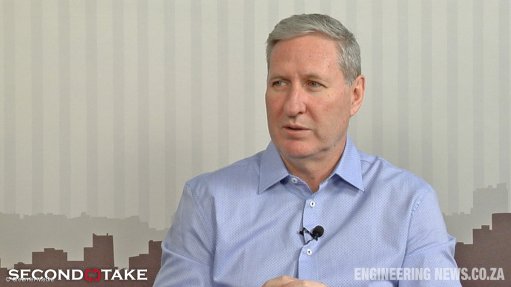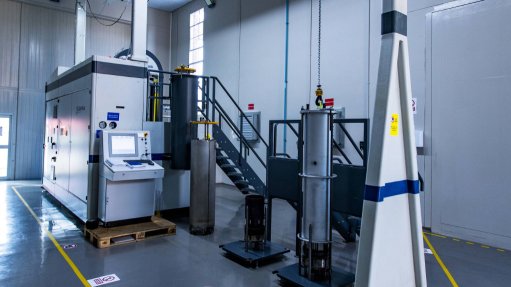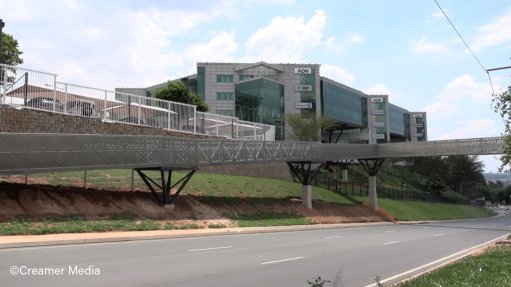Agriculture outperforms rest of economy over 20 years despite margins being squeezed
The agricultural sector in South Africa outperformed the rest of the economy significantly over the past 20 years, despite input costs rising faster than inflation and, in most cases, rising faster than the prices for the agricultural commodities the sector produces.
Much of the growth achieved in the agricultural sector since the dawn of democracy had been export-led, driven by high-value commodities that were also labour-intensive and accountedfor the bulk of employment in agriculture, said independent research organisation the Bureau for Food and Agricultural Policy (BFAP) Commodity Markets & Foresight director and manager Dr Tracy Davids on August 13.
Export markets would remain a strategic growth avenue, though this reliance was increasingly exposed to risks and shifts in the global trade landscape, she said while presenting the BFAP ‘Baseline Agricultural Outlook 2025 to 2034’ report.
The resilience and overall health of South Africa’s macroeconomic environment remains vital to the functioning of agricultural value chains as domestic demand continues to account for a substantial share of consumption, particularly for commodities such as livestock, grains and oilseeds.
However, in the weak economic growth environment, real disposable income had largely stagnated, resulting in limited demand pull to stimulate further agricultural production through domestic channels, she noted.
“The consumer is still constrained. Household disposal income over the past ten years has grown only nominally, and is only 1% better in 2024 than ten years prior.”
Limited income growth and constrained consumer buying power means that, over time, households are not consuming fewer staples and transitioning to higher-valued and healthier food alternatives.
In this context, the South African economy has proven insufficient in generating the demand pull needed to stimulate further agricultural production through domestic channels.
Consequently, export markets remained a strategic growth avenue, though this reliance was increasingly exposed to risks and shifts in the global trade landscape, she said.
“Unless we see a sharp acceleration in income growth in South Africa, the growth of our agricultural sector will depend on international trends,” Davids emphasised.
Further, despite facing significant adversity, the South African agricultural sector has demonstrated remarkable resilience. Farmers planted the largest area under summer crops in more than two decades in 2025.
Additionally, many horticultural industries are also benefiting from notably improved local and international prices, which have coincided with strong production volumes.
As a result, real agricultural GDP was projected to expand by 5.5% this year, offering critical relief to farmers facing acute cash flow constraints arising from the preceding drought. This growth figure might have been even more robust were it not for the outbreak of foot-and-mouth disease (FMD), which had placed substantial pressure on the red meat industry, she highlighted.
Meanwhile, the sharp increase in revenue in the field crops sector from 2020 to 2022 triggered the biggest investment in high-tech farming equipment, seed technology, on-farm infrastructure and farming practices that South Africa has witnessed for several decades.
There were significant spillover effects from these major investments that would carry the field-crop sector through the cooling-off phase beyond this year, she noted.
Importantly, field crops will be able to capitalise on the next upswing triggered by external factors, such as above-normal weather conditions and/or sharp increases in global commodity prices.
These investments also underpinned the competitiveness of South Africa’s livestock sectors, which relied on local field crop producers for affordable feed products, added Davids.
RECOVERY
One of the most reliable indicators of productivity growth is the long-term trend in average crop yields. Prior to the drought-affected 2024 year, South Africa had recorded the highest average yearly yield growth rates for maize, at 4.8%, and soybeans, at 4.1%, over the decade from 2013 to 2023, when compared to other major global exporting nations.
“Such advancements have significantly enhanced South Africa’s competitiveness in international markets and, by extension, bolstered national food security. The ability to consistently produce at export parity price levels means local consumers benefit from prices that are about 30% lower than the cost of comparable imported products,” she noted.
Despite the challenges and volatility the sector faces, a substantial recovery is expected this year, supported by more favourable weather across the summer rainfall regions and improved performance in the horticultural sector.
However, the medium- to long-term baseline projections are more muted, with growth in real terms projected to slow, specifically for field crops, where much lower global prices will be transmitted to local markets once stock levels have normalised.
Lower feed-grain prices will provide some relief for intensive livestock operations, but local demand for these higher-value products remains dampened by the constrained consumer environment amid poor economic performance.
“The widespread FMD outbreak, which has affected major feedlots, constrains short-term meat export prospects and interventions need to be accelerated to bolster growth in the industry.”
Horticulture revenue, following a short-term decline owing to a strengthening in the exchange rate and an increasingly difficult international trade environment, was projected to grow consistently from this year to 2034, reflecting yield improvements and young orchards reaching full bearing-age, noted Davids.
“Developments in recent years highlight the sector’s notable resilience and its capacity to rebound swiftly following periods of contraction. Such resilience, however, is only made possible through sound cash flow management, reliable access to credit and sustained investment aimed at improving overall productivity.
“However, without a stable and enabling policy and investment environment, these essential investments are likely to be constrained, which undermine the sector’s ability to take full advantage of favourable market and climatic conditions,” she said.
AGRICULTURE DEVELOPMENT
Meanwhile, BFAP MD Professor Ferdi Meyer pointed out that farm income had risen by 2.6-times over the past 30 years, while farm costs had increased by 3.3-times, squeezing margins and driving farmers to focus on production to unlock real-term value.
“Growing agricultural value addition can only happen through four mechanisms, namely producing more through expansion, through intensification, switching or diversifying to higher-value crops and managing costs better without impacting on income generation,” he said.
He noted that much of South Africa's soils were marginal; however, agriculture could deliver amazing growth, if it had an opportunity to respond.
For example, the country has seen the highest grain and oil seed area planted in 40 years. For many years, this was on a downward trajectory but, in response to the global increase in prices, the country has added about 500 000 ha of grain and oil seed, he said.
Orchards have also expanded from about 200 000 ha 20 years ago to about one-million hectares of orchards currently planted, which resulted from about R2-billion invested over that time.
“This is amazing growth, with a lot of capital invested, and agriculture can respond quickly if there is an opportunity,” said Meyer.
Using the example of grazing land in the Western Cape next to a table grape farm, he highlighted that grazing land yielded about R2 500/ha a year of revenue while table grape production yielded about R1-million per hectare a year of revenue.
“To convert grazing land to farm land requires water, capital, technology, markets and highly skilled farmers and operators. We have the recipe to develop grazing land to farm land, but this requires investor confidence,” he emphasised.
Targeted interventions and investments into the long-term development goals must be prioritised to address the slow progress on racial transformation and the sector’s overall ability to make a real contribution to rural livelihoods and food security.
However, many of the required short- and long-term interventions were not mutually exclusive, and clear and decisive actions in the short term could have lasting positive impacts with significant multiplier effects throughout the economy, he said.
Article Enquiry
Email Article
Save Article
Feedback
To advertise email advertising@creamermedia.co.za or click here
Comments
Announcements
What's On
Subscribe to improve your user experience...
Option 1 (equivalent of R125 a month):
Receive a weekly copy of Creamer Media's Engineering News & Mining Weekly magazine
(print copy for those in South Africa and e-magazine for those outside of South Africa)
Receive daily email newsletters
Access to full search results
Access archive of magazine back copies
Access to Projects in Progress
Access to ONE Research Report of your choice in PDF format
Option 2 (equivalent of R375 a month):
All benefits from Option 1
PLUS
Access to Creamer Media's Research Channel Africa for ALL Research Reports, in PDF format, on various industrial and mining sectors
including Electricity; Water; Energy Transition; Hydrogen; Roads, Rail and Ports; Coal; Gold; Platinum; Battery Metals; etc.
Already a subscriber?
Forgotten your password?
Receive weekly copy of Creamer Media's Engineering News & Mining Weekly magazine (print copy for those in South Africa and e-magazine for those outside of South Africa)
➕
Recieve daily email newsletters
➕
Access to full search results
➕
Access archive of magazine back copies
➕
Access to Projects in Progress
➕
Access to ONE Research Report of your choice in PDF format
RESEARCH CHANNEL AFRICA
R4500 (equivalent of R375 a month)
SUBSCRIBEAll benefits from Option 1
➕
Access to Creamer Media's Research Channel Africa for ALL Research Reports on various industrial and mining sectors, in PDF format, including on:
Electricity
➕
Water
➕
Energy Transition
➕
Hydrogen
➕
Roads, Rail and Ports
➕
Coal
➕
Gold
➕
Platinum
➕
Battery Metals
➕
etc.
Receive all benefits from Option 1 or Option 2 delivered to numerous people at your company
➕
Multiple User names and Passwords for simultaneous log-ins
➕
Intranet integration access to all in your organisation














